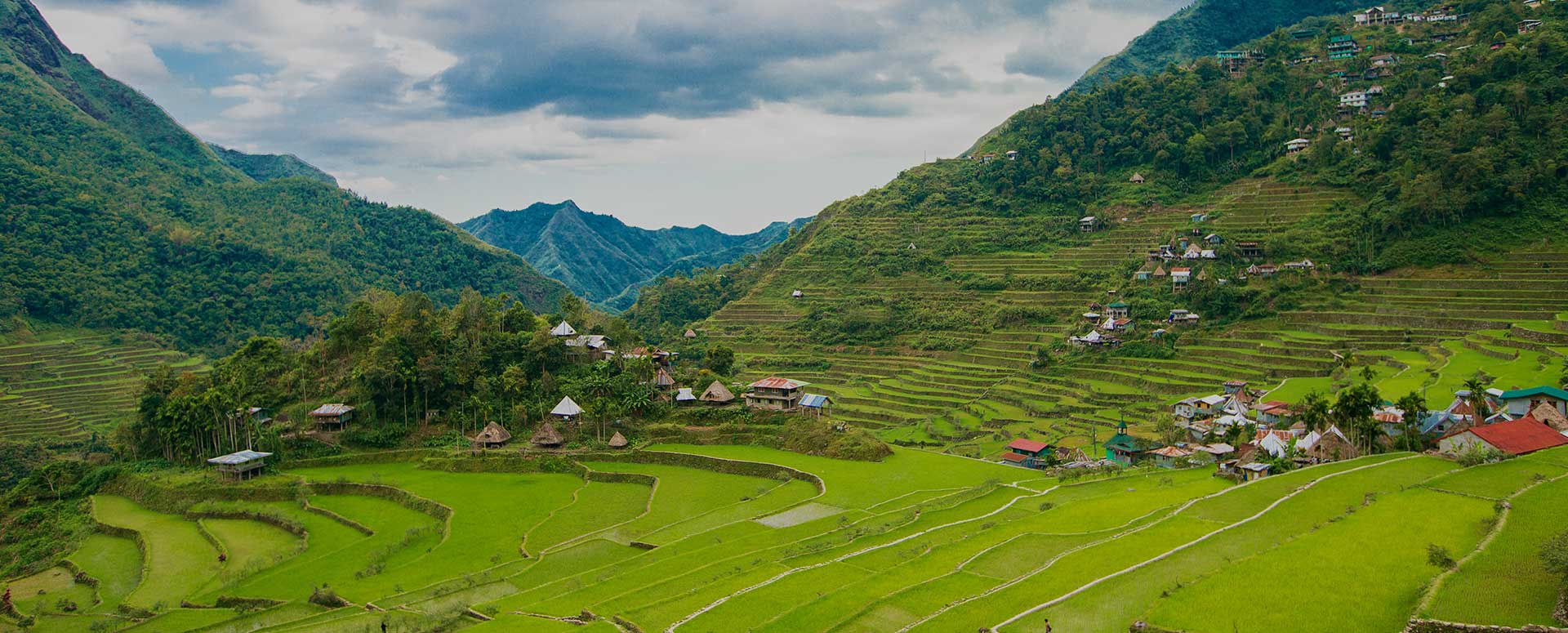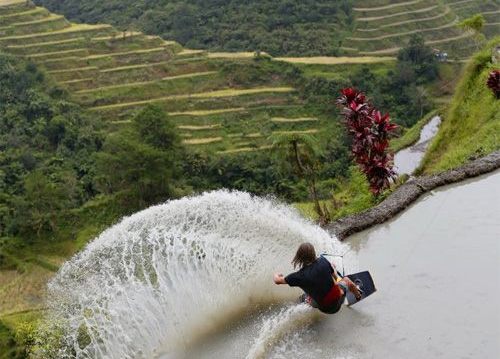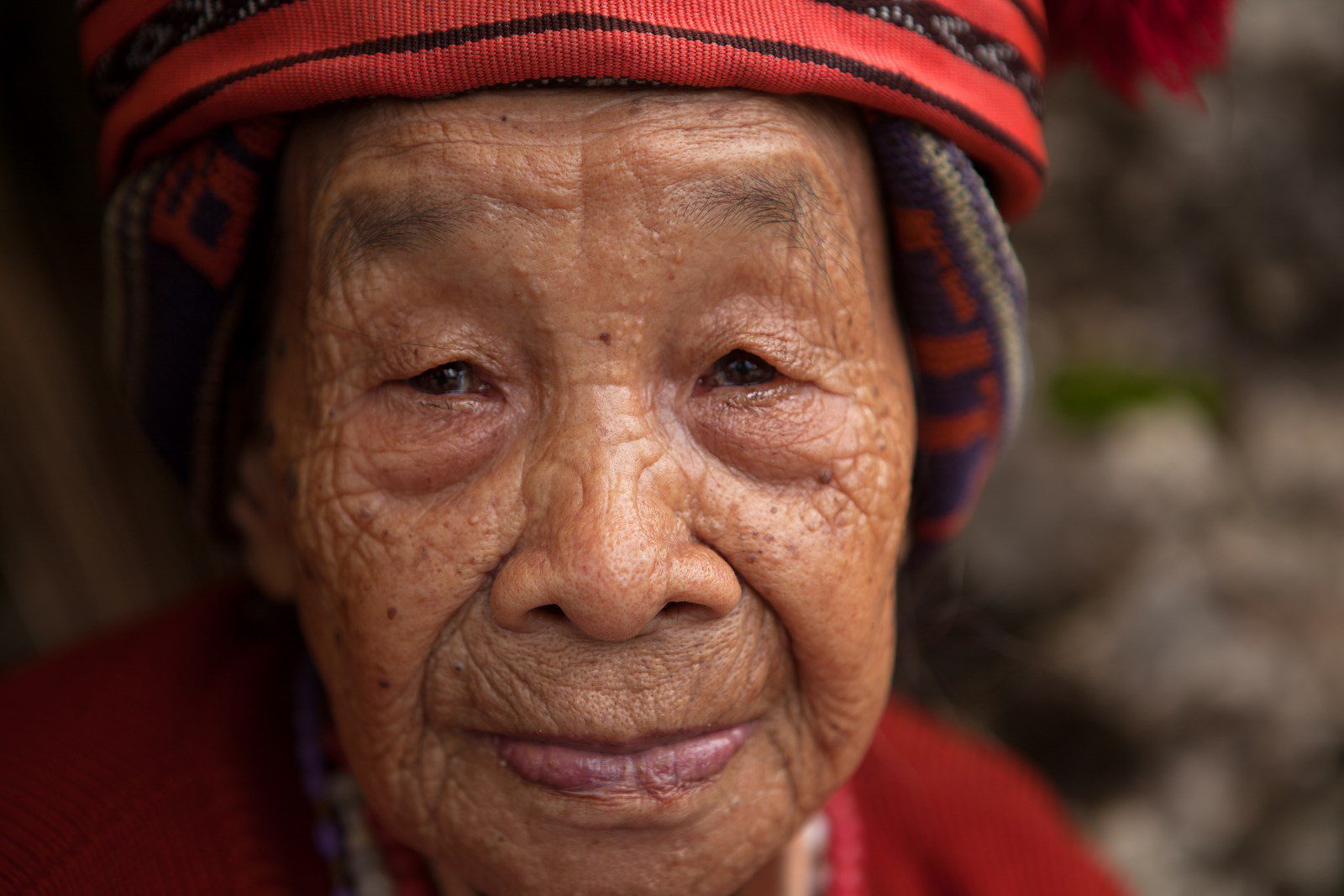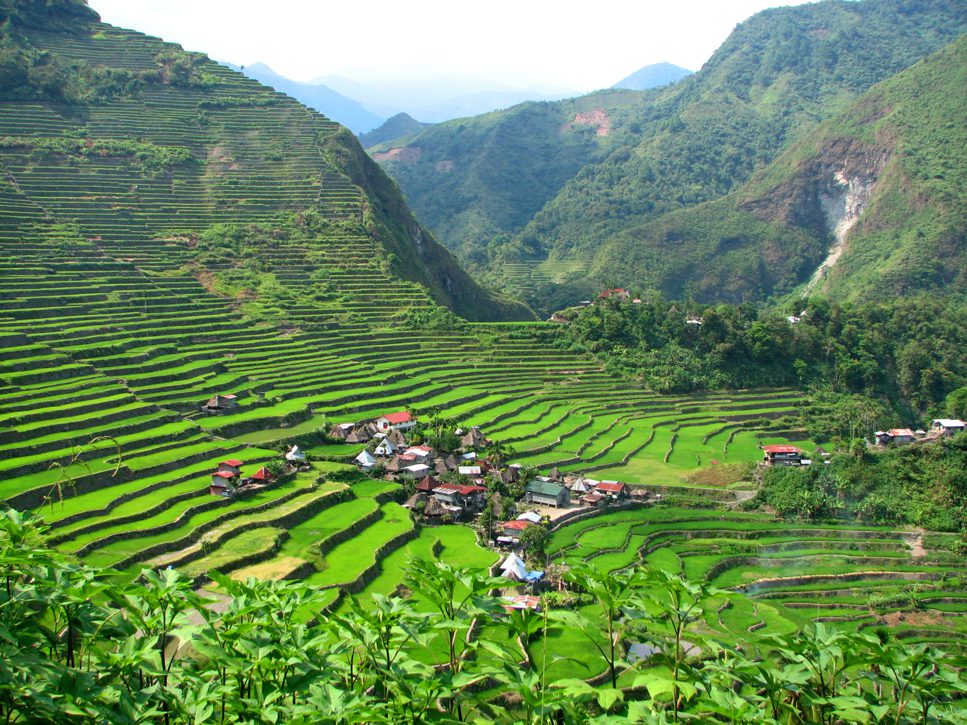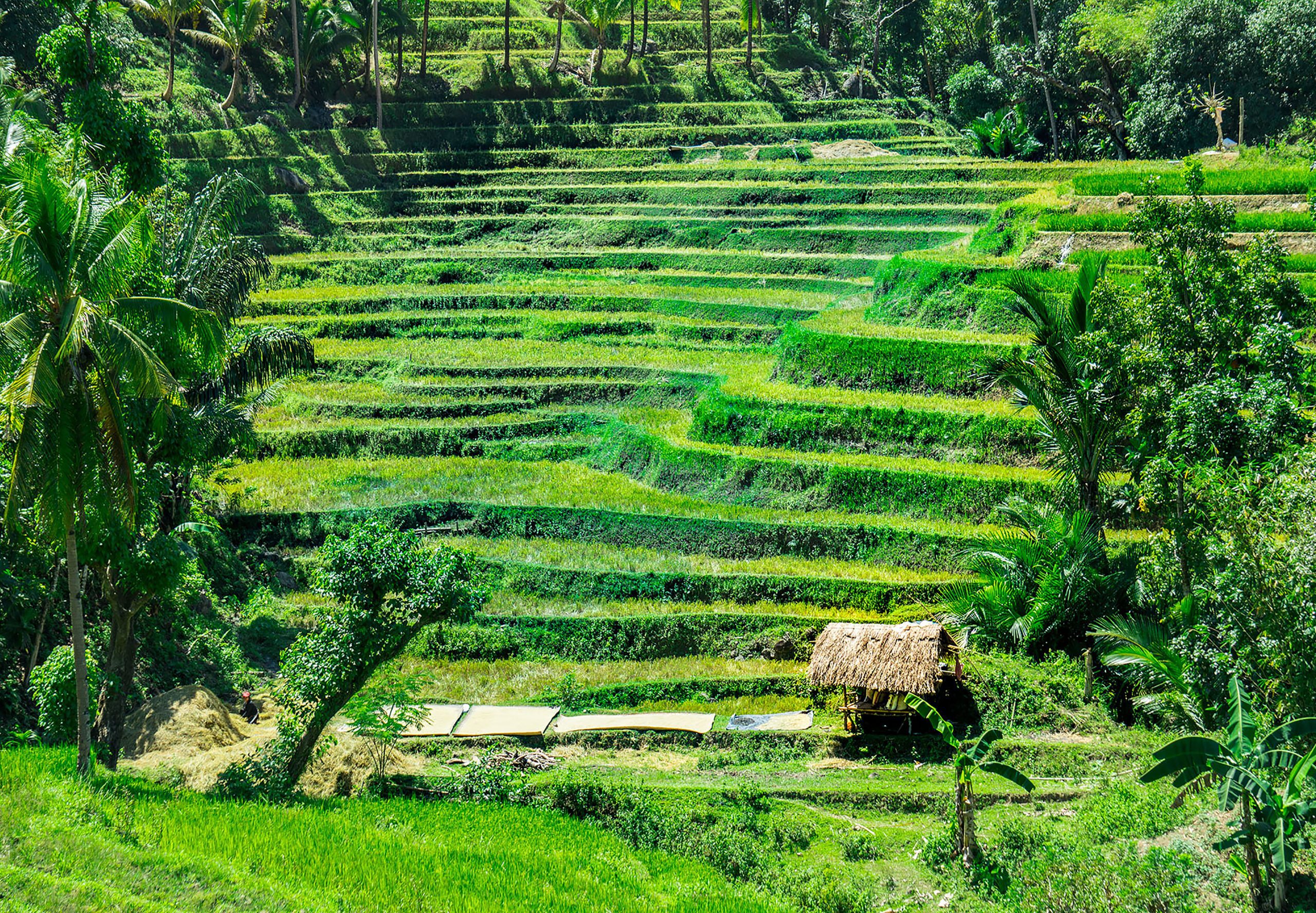Banaue - The amazing rice terraces
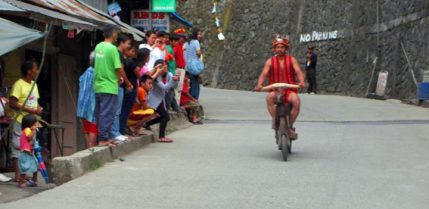
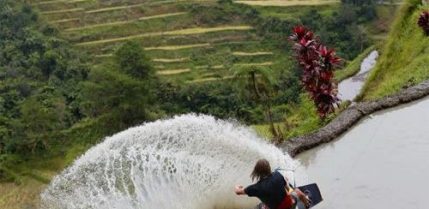
World Heritage Site
The Banaue Rice Terraces are part of the rice terraces of the Ifugao tribe, which are included in UNESCO’s World Heritage List (Banaue Rice Terraces of the Cordilleras, Batad, Mayoyao, and Hungduan in Ifugao). The terraces are considered one of the globally significant agricultural heritage sites and have been chosen as one of the country’s two “Green” global sites by international travelers and tour guides. It has also won an international historical award from the American Society of Civil Engineers.
The place is known as the “Eighth Wonder of the World” according to the country’s tourism offices and local marketers. This remarkable structure showcases the engineering ingenuity of the ancient Ifugao tribe, with some claiming that it was built by their forefathers over two thousand years ago.
Banaue, located in the Ifugao province of the Philippines, is known for its breathtaking rice terraces, often referred to as the ‘Eighth Wonder of the World.’ Here is an overview:
- Batad Rice Terraces
The Batad Rice Terraces are ancient man-made structures dating back 2,000 to 6,000 years and are a UNESCO World Heritage Site. Carved into the mountains of Ifugao by the ancestors of the natives, these terraces are irrigated by ancient mountain springs and streams, primarily used for rice and vegetable cultivation.
- Cultural Significance
The rice terraces not only showcase the engineering prowess of the Ifugao people but also their sophisticated agricultural and communal practices. Ifugao culture is deeply intertwined with rice cultivation, and the rice’s life cycle and the seasons of water are inseparable from their cultural, spiritual, and social lives.
- Key Attractions
Banaue Viewpoint: One of the most photographed spots, where tourists can get a panoramic view of the terraces. Tappiya Waterfall: A popular spot for refreshing swims, the waterfalls are within walking distance from the main viewpoint. Tam-awan Village: A traditional Ifugao village that offers insights into the local way of life. Bangaan Village: Another village with traditional Ifugao houses and terraces surrounding it.
- Indigenous People and Culture
The Ifugao people resisted Spanish colonial influence and have preserved their ancient traditions, customs, and ancestral practices. Ifugao houses, known as ‘Bale,’ are characterized by their high cogon grass roofs and elevated wooden floors, supported by four sturdy wooden posts. Traditional Ifugao attire is handwoven and colorful. “Bulul” statues or rice guardians are integral to Ifugao culture.
- Events and Festivals
Imbayah Festival: A significant cultural event celebrated in April, featuring Ifugao traditions, dances, sports, and wood carving skills.
- Arrival and Accommodation
Banaue is accessible by road from Manila, which takes approximately 9-10 hours by bus. The route offers scenic views as it passes through mountains and valleys. In the town, there is a variety of accommodation options, ranging from budget hostels to more comfortable lodges.
The town is also accessible through Cauayan Airport (CYZ), where there are direct flights from Manila. From there, a breathtaking 4-hour drive will take you to the town.
- Environmental Concerns and Preservation
The rice terraces face challenges due to erosion, climate changes, and occasional neglect, especially as younger Ifugao people migrate to urban areas in search of better opportunities. Local and international efforts have been made to preserve and restore the terraces. Restoration and maintenance often require traditional techniques passed down through generations.
- Tourism
Tourism has brought both blessings and challenges. It has undoubtedly provided economic benefits but has also posed challenges in terms of waste management and potential over commercialization of cultural sites. If you plan to visit, it is crucial to respect local customs and traditions, considering the significance of the rice terraces to the identity and way of life of the Ifugao people.
Banaue, located in Ifugao, the Philippines, with its breathtaking landscape and rich cultural heritage, offers a variety of activities and places to explore. If you’re considering a trip, here are some recommended things to do in Banaue:
- Explore Banaue Rice Terraces:
- Hiking: Join guided hikes on the terraces. The hikes can range from easy walks to more demanding treks, depending on your location and fitness level.
- Sunrise Viewing: Visit viewpoint spots early in the morning to witness a stunning sunrise over the terraces.
- Visit Traditional Villages:
- Batad Village: Often considered the most beautiful among the rice terraces, it is a UNESCO World Heritage site. The trek to Batad is more challenging but rewarding.
- Tam-an Village and Bangaan Village: These are traditional Ifugao villages where you can see authentic houses and meet the locals.
- Tapiya Waterfall:
- Located near Batad, about an hour’s trek from the village, the waterfall is a perfect spot for a refreshing dip.
- Experience Ifugao Culture:
- Cordillera Sculpture Museum: Learn about the rich cultural heritage of the Cordillera region.
- Participate in Local Festivals: If you time your visit right, you can witness the Imbayah Festival or other local celebrations showcasing traditional dances, rituals, and games.
- Traditional Handicrafts: Watch the intricate handwoven textiles and the skilled woodcarving of the locals.
- Try Local Cuisine:
- Sample traditional dishes like “Pinikpikan” (chicken dish), “Binukol” (chicken soup with young coconut), and locally grown rice.
- Purchase Souvenirs: In Banaue, there are several souvenir shops where you can buy local artwork, including handwoven items, wooden sculptures, and beadwork.In Banaue, you’ll find a wide selection of souvenir shops, especially known for their handcrafted wooden sculptures, a craft for which the Ifugao people are renowned. You can purchase a variety of items, including “Bulul” (carvings of revered figures) and the “Agabi” bench, which is associated with the highest social status in the Ifugao community.
- Participate in Workshops: Some local organizations and hosts offer workshops on traditional handicrafts, agriculture, or cooking.
- Engage in Ecotourism Activities: Several organizations in the area promote sustainable tourism, where you can participate in activities that help the environment or the community. For example, volunteer in projects related to terrace restoration or tree planting.
- Stay in a Traditional Ifugao House: To get an authentic experience, consider staying in a “Bayle” or a traditional Ifugao hut. Some of them are available for tourists.
- Explore Nearby Areas: Places like Sagada and Baguio City are within reach and can be combined with your visit to Banaue for a more extensive exploration of Northern Luzon.From the town of Banaue, which serves as the gateway to the famous rice terraces and rich cultural heritage of the Ifugao region, there are several tours that visitors typically embark on. Here are some of the best tours you can consider:
- Batad Rice Terraces Tour: Duration: Full day or overnight Description: Trek through the Batad rice terraces in an amphitheater-like formation, visit Tappiya Falls for a refreshing swim, and stay overnight in the village to experience local life.
- Hapao Rice Terraces and Warm Springs Tour: Duration: Full day Description: Explore the beautiful Hapao rice terraces and relax in the warm springs of Hapao.
- Bangaan Village and Viewpoint Tour: Duration: Half-day to a full day Description: Get a glimpse of traditional Ifugao village life in Bangaan and enjoy panoramic views of the rice terraces from various viewpoints.
- Banaue Viewpoint and Museum Tour: Duration: Half-day Description: Visit the main viewpoints in Banaue for stunning vistas of the terraces and then explore the Banaue Museum to learn about the region’s history and culture.
- Sagada Tour: Duration: Full day or overnight (Sagada is approximately 2-3 hours away from Banaue) Description: Explore Sumaguing and Lumiang caves, witness the hanging coffins, visit Echo Valley, and experience the cool climate and unique culture of Sagada.
- Mayoyao Rice Terraces Tour: Duration: Full day Description: Mayoyao, less frequented compared to Batad or Banaue, offers stunning rice terraces and an authentic experience of Ifugao culture.
- Kiangan Rice Terraces and Ifugao Museum Tour: Duration: Full-day Description: Explore another stunning group of terraces in Kiangan and visit the Ifugao Museum to dive deeper into the region’s history.
- Mount Amuyao Trek: Duration: 2-3 days
Description: This one’s for adventurers! Mount Amuyao is one of the tallest peaks in Luzon, and the trek offers panoramic views of the Cordillera mountains and the rice terraces.
Tips for Choosing and Booking Tours:
Local Recommendations: Consider hiring local guides. They provide insights that enrich the experience and ensure you respect local customs. Personalization: Some tour operators allow personalized route customization based on your interests.
Physical Fitness: Certain treks, especially those in Batad, can be quite demanding. Make sure you are aware of the physical requirements before booking.
Friendly Operators: Choose tour operators engaged in responsible tourism, minimizing environmental impact and supporting local communities. Advance Booking: Especially during peak tourist seasons, it’s advisable to book tours in advance.
Always remember to respect local customs and traditions. Banaue and its surroundings are not just tourist destinations; they are living communities with deep-rooted traditions. Enjoy your visit while making a positive impact!
>> Banaue Trip – 4 Days and 3 Nights (Recommended!)
>> Batad Rice Terraces – Enchanting and Unique Place – Click here.
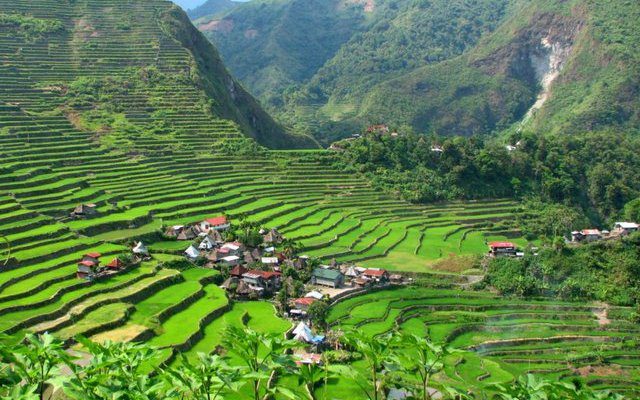
Hapao Rice Terraces, another incredible example of Ifugao ingenuity, form breathtaking stepped fields on the mountainside. While not as globally renowned as the Banaue or Batad terraces, the Hapao Rice Terraces offer an equally captivating experience and are less frequented by tourists, providing a more tranquil setting.
Activities in and around the Hapao Rice Terraces: Trekking: It’s highly recommended to explore the terraces on foot. The undulating patterns of the terraces against the backdrop of lush forests and clear skies are a sight to behold.
Hapao’s Hot Springs: Located near the terraces, Hapao’s hot springs are a perfect place to relax and rejuvenate after a trek. The warm, natural springs surrounded by nature offer therapeutic benefits.
Traditional Village Life: The village surrounding the Hapao terraces gives visitors a chance to glimpse into the daily lives of the Ifugao people. This includes traditional agriculture, fishing, and other cultural practices.
Photography: With its scenic beauty, the Hapao Rice Terraces provide numerous opportunities for photography. From the intricate patterns of the terraces to the daily activities of the locals, there is much to capture.
Cultural Immersion: Interacting with the locals can provide a deeper understanding of their customs, traditions, and way of life. Visitors can learn about community farming methods, rituals related to rice cultivation, and the significance of rice terraces in Ifugao culture.
Homestay Experience: Some local families offer homestay accommodations, allowing tourists to immerse themselves fully in Ifugao’s way of life. It also provides a unique opportunity to taste authentic local cuisine and participate in daily tasks.
How to Get There: The Hapao Rice Terraces are located near the municipality of Hungduan, approximately 16 kilometers from Banaue. While the road is mostly challenging and steep, the journey is well worth the destination. It’s advisable to hire a local guide or join a tour to ensure the best experience and avoid getting lost.
Note: As always, when visiting culturally and ecologically sensitive areas like these, it is crucial to show respect. Stick to marked trails, avoid littering, and be mindful of local customs and traditions.
The Batad Rice Terraces are undeniably one of the most stunning and iconic landscapes in the Philippines and the world. Located within the Cordillera mountain range in northern Luzon, Batad is a remote village within the Banaue municipality of Ifugao province. Its rice terraces are often likened to a half-circle amphitheater due to their unique semi-circular layout.
Activities in and around the Batad Rice Terraces:
- Trekking: Batad offers various trekking routes that allow visitors to explore the rice terraces up close. The trails can be steep and challenging, but the panoramic views are rewarding.
- Tappiya Falls: A popular trek from Batad village, Tappiya Falls is approximately a 1.5-hour hike away. The waterfall cascades into a natural pool, providing a refreshing place for swimming, though the water can be cold after the strenuous hike.
- Village Tour: The Batad village itself is a testament to traditional Ifugao culture. Visitors can explore the traditional Ifugao houses known as “bale” and interact with the locals to gain insight into their way of life.
- Viewpoint: The viewpoint offers a breathtaking panoramic view of the Batad amphitheater. While the trek to the viewpoint can be challenging, it provides an excellent vantage point for photographers and nature enthusiasts.
- Cultural Immersion: Engage with the local community by participating in traditional activities, learning about their rituals, or simply having a conversation over a cup of local coffee.
- Homestay Experience: To gain a deeper understanding of Ifugao life, consider staying with a local family in Batad. This provides an opportunity to taste authentic local cuisine and immerse yourself in their daily routines.
How to Get There: Batad is not directly accessible by car. Visitors typically take a jeepney or tricycle ride from Banaue to the Batad saddle point. From there, it’s about a 40-minute to 1-hour trek downhill to Batad village.
Conservation: The Batad Rice Terraces, along with other terraces in the region, were designated as a UNESCO World Heritage Site in 1995 under the collective title “Rice Terraces of the Philippine Cordilleras.” Conservation efforts continue as the terraces face natural threats, changing weather patterns, and the migration of younger generations to urban areas.
Travel Tips:
- Wear comfortable trekking shoes, as the trails can be steep and rugged, especially during the rainy season.
- Consider hiring a local guide. They not only know the best trails and viewpoints but also contribute to the local economy.
- Bring essentials such as water, snacks, and rain gear, especially if you plan to spend the whole day trekking.
- Respect local customs and traditions. The people of Ifugao take great pride in their heritage, so it’s essential to be aware of this during your visit.
In summary, the Batad Rice Terraces offer a unique blend of natural beauty, rich cultural experiences, and a living testament to the harmonious relationship between the Ifugao people and their environment.
Unique Attractions in the Area
If you’re looking for something unique, you can try riding wooden scooters called “tustos.” These are practical scooters that are handcrafted from full oak wood and can be rented at a low price. The tustos can reach speeds of up to 80 km/h downhill. They are lightweight and easy to assemble, with wooden wheels padded with rubber coating and foot pedals for manual braking, specially designed for mountainous terrain. To ride uphill, use your feet similarly to the “kick-push” effect seen in the popular television series “The Flintstones.”
The Stunning Views from Above…
The best way to get a breathtaking view of the magnificent rice terraces is, of course, from the highest point. After a few body-stretching exercises, begin your journey on a trek to the highest viewpoints from the Banaue mountains, which takes about an hour’s walk.
There are numerous viewpoints along the trail, especially on the way to the town of Bontoc. Your efforts at the mountain’s summit will reward you with a panoramic view towards the enchanting terraces of Ifugao.
Activities and Attractions Unique to Banaue
Just when you thought you had seen everything, two guys appear, surfing on “wakeskates” down the rice terraces of Banaue, enjoying as never before.
When a video appeared on the internet showing extreme sports pioneers Brian Grubb from the United States and Dominik Preisner from Germany speeding on wakeskates down the Banaue rice terraces, an immediate outcry erupted, accusing them of disrespecting and damaging the ancient wonder, a site over a thousand years old. The issue sparked extensive discussions on various social networks, appeared on local and international news channels, and was featured in newspapers, with many expressing their concerns.
What is the ultimate stance or conclusion on the matter? Did some of the rice terraces indeed get affected by the actions of the athletes? Did they disrespect the Ifugao people and their leaders? According to Banaue’s former Mayor, Jerry Difug, the answer is no. Difug took care to ensure that no portion of the terraces would be damaged during the stunt. The elders of the “Mumbaki,” the Ifugao tribe’s religious and healing leaders who perform their traditional and religious dances in the terraces, gave their consent after consulting with them about the stunts and even conducted tribal ceremonies to ensure the safety of the daring athletes and the welfare of the rice fields that included the ritual sacrifice of chickens and rice wine drinking for blessings.
Good to Know
Recommended Day tours
No tours match your criteria
Recommended Hotels
No tours match your criteria


